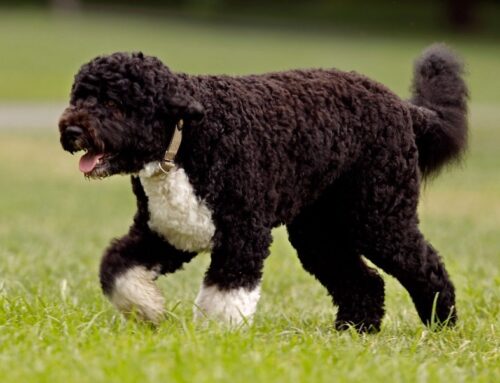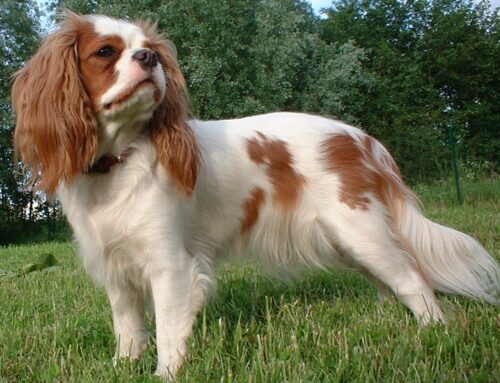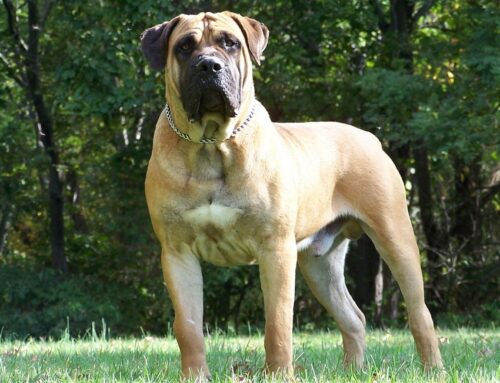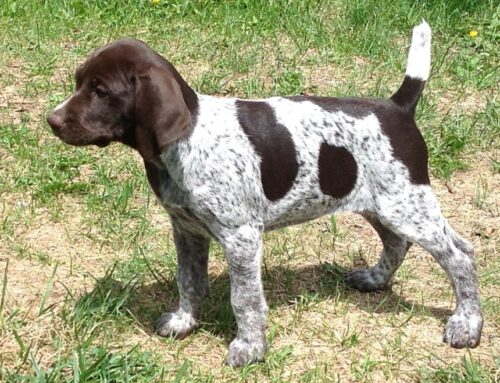The breeds of the hound group are among those that have worked most closely in cooperation with humans, having helped us to hunt and survive. They are particularly devoted to their masters
and, in return, they have earned great respect and admiration. The hounds are divided into two groups:
- sight hounds, which pursue quarry mainly by visual contact; and
- scent hounds, which hunt with the exceptional canine sense of smell.
The French have contributed a great deal to the breeding of scent hounds, partly because successive French kings and their retainers used them to flush game from all corners of the extensive royal forests. Scent hounds are usually quite happy to coexist with other dogs and are at their happiest when using their formidable scenting abilities to follow a trail. Most scent hound breeds are squarely proportioned, standing as tall at the shoulder as their body is long (the short-legged Bassets being one notable exception). Sight hounds, in comparison, are more aerodynamic, sleek, and graceful creatures – being long-limbed and often deep-chested, supporting a large lung capacity that enables them to pursue prey at high speed.
A characteristic of many of the hound breeds is their ability to produce the distinctive (and, for many people, unnerving) sound called baying. As pets, hounds are energetic dogs that need plenty of exercise, including long daily walks and/or a long run off the leash every day. They are not especially territorial, but they do retain a strong instinct to chase prey-sized creatures be they rabbits, squirrels, cats, or simply sticks, balls, and other toys so they should be exercised in a secure area.
Both Sight and Scent hounds tend to be intelligent, and independent thinkers. Don’t expect hounds to be experts in obedience, they do not respond well to drills or overly firm training. They are not ideal for the first dog owner. Hounds tend to be relatively healthy with few major problems, life expectancy averages 12 years. Sighthounds, also called gazehounds, are hounds that primarily hunt by speed and sight, instead of by scent and endurance, as scent hounds do.
Like their name implies, the hunt by keeping their prey in sight, and overpowering it by their great speed and agility. They must be able to quickly detect motion, so they have keen vision. Sighthounds must be able to capture fast, agile prey such as deer and hare, so they have a very flexible back and long legs for a long stride, a deep chest to support an unusually (compared to other dogs) large heart, very efficient lungs for both anaerobic and aerobic sprints, and a lean, wiry body to keep their weight at a minimum.
The typical sighthound also has a light, lean head, which is referred to as being dolichocephalic in its proportions. This shape can create the illusion that their heads are longer than usual. Dolichocephaly is actually a characteristic of wolves and other wild carnivores, and is related to the need for stereoscopic vision in active hunting. For reasons not yet understood, most domesticated animals including dogs (other than the sighthounds) have become brachycephalic – short-headed – and have partially lost this aspect of their field of vision (see cephalic index).
History Sighthounds such as the Saluki may have existed for at least 5,000 years, with the earliest known sighthounds appearing in Eurasia.
The earliest description of a sighthound in European recorded history comes from Arrian’s Cynegeticus, of the 2nd century AD. Although today most sighthounds are kept primarily as pets, they have been bred for thousands of years to detect movement, chase, capture, and kill prey primarily by speed. They thrive on physical activity. Some have mellow personalities, others are watchful or even hostile towards strangers, but the instinct to chase running animals remains strong. Apart from coursing, open-field coursing, and hunting, various dog sports are practiced with purebred sighthounds, and sometimes with Lurchers and Longdogs. Such sports include racing, lure coursing, and other events.
Miscellaneous The fastest sighthound, the Greyhound, can reach speeds of just over 40 mph (64 km/h). Some breeds or varieties of hounds have historically been called “Half-Sighthounds”, in particular the Mediterranean Islands hunting dogs, which have erect ears and use scent and hearing predominantly when they chase their main prey. the rabbit. In many countries, sighthounds may not be exercised off leash, due to their propensity to chase and hunt anything that moves.
The Sighthound family includes:
- Afghan Hound
- Africanis (Bantu Hound, Hottentott Hound, Kafir Hound, Khoikhoi Hound, Zulu Hound)
- American Staghound
- Azawakh
- Basenji
- Borzoi
- Chart Polski (Polish Greyhound)
- Chippiparai
- Circassian
- Orloff Wolfhound
- Cirneco dell’Etna
- Combai Galgo
- Espanol (Spanish Greyhound)
- Greyhound
- Hortaya
- Borzaya (Chortaj)
- Ibizan Hound (Podenco Ibicenco)
- Irish Wolfhound
- Italian Greyhound
- Kaikadi
- Kangaroo Dog
- Kanni Khalag
- Tazi Longdog
- Lurcher
- Magyar Agar
- (Hungarian Greyhound)
- Mudhol Hound
- Pashmi Hound
- Pharaoh Hound (Kelb tal-Fenek)
- Podenco Canario (Canary Islands Hound)
- Podenco Andaluz (Andaluzian Podenco)
- Portuguese Podengo (Podengo Portugues)
- Rajapalayam Rampur
- Greyhound
- Redbone Coonhound
- Rhodesian Ridgeback
- Saluki
- Santal Hound
- Scottish Deerhound
- Silken Windhound
- Sloughi
- South Russian Steppe Hound
- Taigan Tasy
- Treeing Walker Coonhound
- Vaghari Greyhound
- Whippet
Scent hounds are hounds that primarily hunt by scent rather than sight. They are generally regarded as having some of the most sensitive noses among canines. These dogs specialize in following a smell or scent. Most of these breeds have long, drooping ears. One theory says that this trait helps to collect scent from the air and keep it near the dog’s face and nose. They also have large nasal cavities, the better to process scent. Their typically loose, moist lips are said to assist in trapping scent particles.
Most of these breeds have deep, booming voices and use them actively when running, and especially when following a scent trail. Although this is a nuisance in settled areas, it is a valuable trait that allows the dog’s handler to follow the dog or pack of dogs during a hunt even when they are out of sight, such as when following a fox through woodland.
Scent hounds do not need to be as fast as sight hounds because they do not need to keep prey in sight, but they need endurance so that they can stick with a scent and follow it for long distances over rough terrain. The best scent hounds can follow a scent trail even across running water and even when it is several days old.
Most scent hounds, even when kept as pets, still are happiest when following a scent trail. Most scent hounds were used for hunting in packs, sometimes with multiple dogs in a single pack. Longer-legged hounds ran more quickly and usually required that the hunters follow on horseback; shorter-legged hounds allowed hunters to follow on foot.
The Scent Hound family includes:
- Basset hound
- Bavarian Mountain hound
- Beagle
- Beagle-Harrier
- Bloodhound
- Brachet Coonhound
- Black and Tan Coonhound
- Redbone Coonhound
- Bluetick Coonhound
- English Coonhound
- Treeing Walker Coonhound
- Plott Hound
- Dachshund (Short Haired)
- Dachshund (Long Haired)
- Dachshund (Wire-haired)
- Foxhound
- Grand Basset Griffon Vendeen (GBVB)
- Grand Bleu de Gascogne
- Harrier Dog
- Ibizan hound Irish Wolfhound
- Kerry Beagle
- Kritikos Ichnilatis (Cretan Hound)
- Norwegian Elkhound
- Otterhound
- Petit Basset Griffon Vendeen
- Polish Hound (pl.Ogar Polski )
- Polish Scenthound (pl.Gonczy Polski )
- Rhodesian Ridgeback
- Scottish Deerhound
- Zyler hound






Leave A Comment